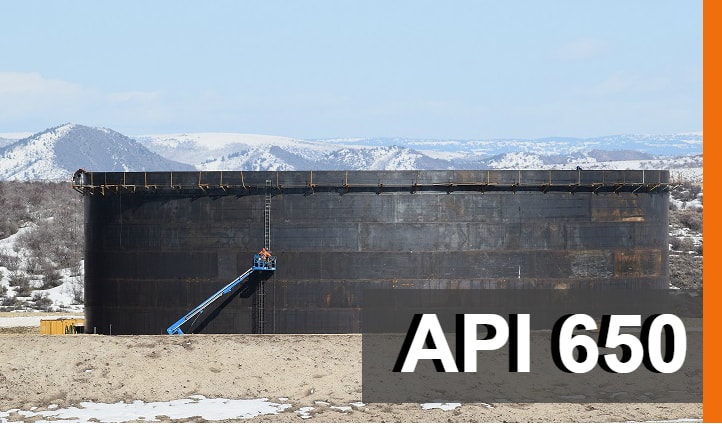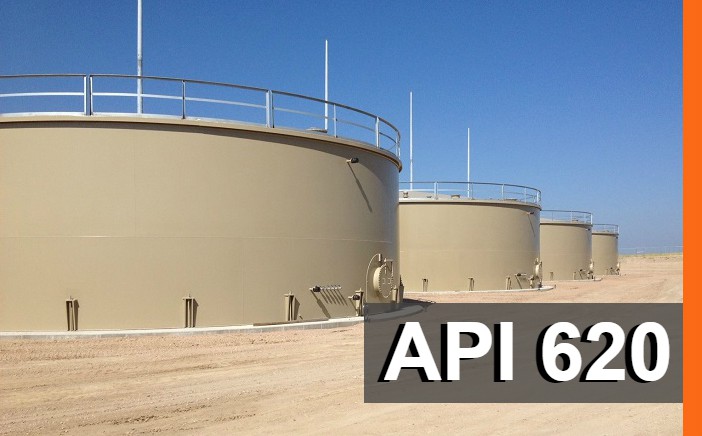Just How Welding Assessment Works: A Comprehensive Overview for Professionals
Welding evaluation plays a vital function in making sure the security and reliability of bonded structures. It involves a methodical approach that consists of both visual assessment and advanced screening approaches. Experts must acquaint themselves with key requirements and regulations regulating the sector. Understanding the typical defects that can develop throughout welding is necessary. This guide will explore these elements in information, providing insights into the procedures that promote high quality and stability in welding.
Recognizing the Significance of Welding Assessment
While many may ignore the relevance of welding examination, it plays an important function in making sure the honesty and safety and security of bonded frameworks. Effective welding evaluation identifies potential defects and defects that can jeopardize structural strength and bring about devastating failures. The examination process incorporates numerous strategies, such as visual evaluations, ultrasonic testing, and radiographic assessments, each adding to the total analysis of weld top quality.
Along with safeguarding the architectural stability, welding assessment guarantees compliance with industry criteria and client specifications. By ensuring that welds meet called for resistances and attributes, examinations aid preserve the reliability and longevity of parts in different applications, from building to aerospace. In addition, a strenuous inspection procedure promotes a culture of quality and accountability amongst producers and welders. Inevitably, welding assessment is not merely a procedural step; it is a critical method that underpins the safety and security and performance of crafted systems across varied industries.
Trick Criteria and Regulations in Welding Evaluation
The structure of effective welding examination hinges on adherence to developed regulations and requirements. Various organizations, such as the American Welding Culture (AWS) and the American National Standards Institute (ANSI), established forth standards that guarantee high quality and safety in welding methods. Trick standards, such as AWS D1.1 for structural welding and ASME Area IX for stress vessels, provide complete criteria for welding procedures, certifications, and examinations. Governing structures, consisting of those from the Occupational Safety and Wellness Administration (OSHA), mandate safety practices and employee securities in welding settings. Conformity with these requirements is crucial for attaining regular weld top quality and decreasing the threat of failings. Additionally, international criteria like ISO 3834 better boost international consistency in welding evaluation practices. Professionals should stay educated concerning these guidelines to ensure that their assessment techniques align with industry assumptions and legal requirements, thereby safeguarding both personnel and architectural stability.
Preliminary Preparation and Aesthetic Assessment Techniques

Reliable welding evaluation begins with a detailed pre-inspection checklist that assures all needed conditions are satisfied before the real inspection takes area. Following this preparation, aesthetic defect recognition plays an essential function in evaluating weld top quality, allowing assessors to spot issues such as splits or improper combination. With each other, these techniques develop the foundation for a successful welding assessment process.
Pre-Inspection Checklist
Prior to starting any welding assessment, a comprehensive pre-inspection list is necessary to ensure that all required preparations are completed which aesthetic examination techniques are efficiently used. Key elements of this checklist include confirming the welding treatment requirements (WPS), making sure all equipment is calibrated and in great working condition, and verifying that the examiner has the called for accreditations. In addition, it is important to assess any kind of previous inspection reports and to evaluate the workplace for safety risks. The examiner must additionally verify that all appropriate paperwork, such as material certificates and assessment records, is readily offered. Finishing this list aids to establish a strong structure for an effective evaluation process, improving the reliability of the outcomes acquired.
Aesthetic Problem Identification
An effective aesthetic flaw identification procedure begins with careful first preparation and the application of established aesthetic assessment techniques. Assessors ought to ensure that the welding area is well-lit and clean, as adequate exposure is important for finding issues. A detailed exam of the weld joint's surface enables the identification of suspensions, such as splits, undercuts, or porosity. Assessors typically utilize devices like magnifying glasses or mirrors to improve their sight of hard-to-reach areas. In addition, they must be familiar with the certain welding standards and standards pertinent to the job. By sticking to these methods, examiners can effectively determine possible issues, securing the honesty of the weld and compliance with market criteria.
Non-Destructive Testing Techniques: An Overview
Non-destructive testing (NDT) approaches play a crucial function in the welding evaluation procedure by making certain the integrity and dependability of bonded frameworks without causing any type of damages (API 650 Welding Inspection). These strategies enable examiners to review the quality of welds while protecting the components being taken a look at. Usual NDT techniques consist of ultrasonic screening, radiographic screening, magnetic fragment screening, and color penetrant screening, each offering unique advantages
Ultrasonic testing uses high-frequency sound waves to spot interior imperfections, while radiographic screening utilizes X-rays or gamma rays to imagine the interior framework of welds. Magnetic bit screening exposes surface area and near-surface flaws by using an electromagnetic field and iron bits to the weld location. Dye penetrant testing highlights surface-breaking defects with the application of a colored dye. With each other, these NDT approaches give vital insights into weld quality, enabling professionals to make enlightened choices pertaining to safety and security and conformity in welding applications.
Common Flaws and Their Effects
Recognizing typical flaws in bonded joints is essential for maintaining architectural honesty and security. Different defects can develop during the welding procedure, each lugging potential effects for the general performance of the framework. Porosity, defined by small gas pockets within the weld, can damage the joint and compromise its load-bearing capability. Cracks may create due to thermal stress and anxiety or incorrect air conditioning, resulting in prospective failure under tension. Incomplete hop over to here blend happens when the weld steel does not fully bond with the base product, resulting in weak joints that might not withstand designated loads. Damaging, where the base metal is eroded, can likewise decrease the effective cross-section of the weld. Furthermore, excessive support can produce anxiety concentrations that could cause failing. Identifying these issues immediately enables corrective measures, guaranteeing the long life and integrity of bonded frameworks in critical applications.
Tools and Equipment Used in Welding Inspection
Efficient welding examination relies on a selection of specialized tools and tools to guarantee the high quality and honesty of welded joints. Crucial tools consist of visual inspection tools, such as amplifying glasses and borescopes, which allow assessors to carefully take a look at welds for surface flaws. Non-destructive testing (NDT) techniques, such as ultrasonic screening, radiographic screening, and magnetic bit screening, are essential for identifying internal problems without harming the product.
Measurement tools, consisting of calipers and weld assesses, aid determine and assess dimensions compliance with specifications. In addition, solidity testers review the mechanical properties of welded joints. Personal safety tools (PPE) is additionally vital, securing the safety of assessors while working in possibly hazardous atmospheres (API 650 Welding Inspection). Each device serves a details objective, collectively improving the performance of welding inspection and adding to the reliability of completed tasks
Often Asked Questions
What Credentials Are Needed to Come To Be a Welding Inspector?
To become a welding assessor, individuals usually need appropriate certifications, such as AWS CWI or CSWIP, together with experience in welding processes, engineering principles, and expertise of inspection strategies, safety standards, and appropriate codes.
How Frequently Should Welding Inspections Be Conducted?
Welding assessments should be conducted frequently, preferably at various project stages, consisting of pre-weld, during-weld, and post-weld. Frequency might likewise depend on sector criteria, project specs, and the complexity of the welds entailed.
Can Welding Defects Be Fixed After Examination?

Yes, welding problems can typically be repaired after evaluation. Depending upon the seriousness and kind of issue, ideal techniques such as reworking or additional welding may be employed to bring back structural stability and safety conformity.
What Industries Require Regular Welding Inspections?

Numerous industries, consisting of have a peek at this website construction, production, aerospace, and auto, need regular welding inspections - API 650 Welding Inspection. These inspections assure adherence to safety and security criteria and quality assurance, decreasing threats connected with architectural stability and functional efficiency in welded components
Just how Do I Select a Welding Examination Service?
To choose a welding examination service, one ought to consider certifications, experience, accreditations, and market credibility. Additionally, evaluating consumer evaluations and assuring the solution fulfills pertinent requirements can aid guarantee quality inspections and trusted results.

While several may underestimate the importance of welding evaluation, it plays a necessary function in ensuring the integrity and security of welded frameworks. Secret criteria, such as AWS D1.1 for structural welding and ASME Area IX for pressure vessels, offer extensive requirements for welding certifications, procedures, and evaluations. Reliable welding inspection begins with a thorough pre-inspection checklist that guarantees all essential conditions are met prior to the actual assessment takes place. Prior to commencing any kind of welding inspection, a complete pre-inspection list is vital to guarantee that all essential prep work are completed and that visual evaluation techniques are effectively employed. Non-destructive testing (NDT) methods play an important duty in the welding evaluation procedure by making certain the stability view it now and dependability of bonded frameworks without triggering any type of damages.